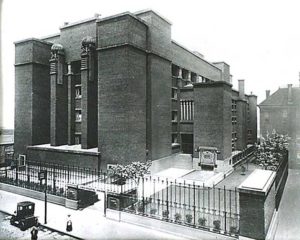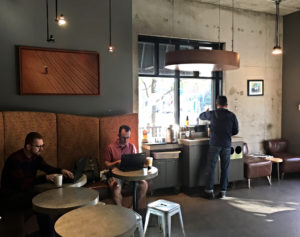The art of office design did not begin with the intentionality that it has today. The act of bringing style to the workplace was an effort for employers to make the environment more efficient to bolster productivity. Although office designs have taken on many forms over the decades, it seems that the concept of nature is a style theme that continues to dominate the sphere.
The Revolution of the Early 1900s 
Changes in product demand came with the need for open space when working. Such is the reason why employers invested in clutter-free environments that resembled what many call modern office spaces in today’s era. The Larkin Administration Building is considered by many as a trailblazer of the era as its environment was the first purpose-designed workspace of its kind.
Office Landscaping by Way of Burolandschaft during the 1960s
The 1960s brought many challenges to the political system, and the workplace was not immune to change. Many employers began exchanging the hierarchy appeal in the workplace for more socialized environments. The answer that they found came in the form of Burolandschaft.
A German concept that means “office landscape,” Burolandschaft grouped desks and added colorful decoratives such as plants to move away from the bland workplace that relied more on science than psychology. It was during this time that architect Quickborner created cell structure landscaping that laid the ground for the cubicle work environments that would come decades later.
Into the Box with the 1980s
Many companies began moving away from open space socialization and towards private cubicles during the 1980s. The idea behind these personalized cells was to give employees the privacy that they needed to be productive while also remaining open to the idea of an open floor. In some respects, the cubicle era still has influence in the United States workplace as several corporations presently use the layout.
The Millennium: Coffee Sho ps and Work as a Fun Spot
ps and Work as a Fun Spot
The year 2000 saw the rise of coffee shops and wireless technology that challenged the need for workers to come into the office every day. Companies responded by using landscapes to create more lighthearted work environments that appealed to employees’ adventurous sides.
2010 and Beyond: Collaborating
Modern workplaces began to take on a biophilic design in 2010 that encouraged collaboration and joint problem-solving. These days, designers are following Google and other successful companies by taking nature into account when decorating. The idea is not to cage workers off from the rest of the world, but rather to connect them with plants and other aspects of the world to nurture more happy and productive employees.
Th e world is more connected than ever before and that is not likely to change. Office spaces need to take into account virtual collaboration in their planning. With more people being able to work from home, it might not be necessary for all employees to be at work every single day. In that sense, flexible workspaces might be a good option for employers to consider.
e world is more connected than ever before and that is not likely to change. Office spaces need to take into account virtual collaboration in their planning. With more people being able to work from home, it might not be necessary for all employees to be at work every single day. In that sense, flexible workspaces might be a good option for employers to consider.
Office Innovations, Inc., has helped companies create the perfect working environment since 1997. We would love to help you!